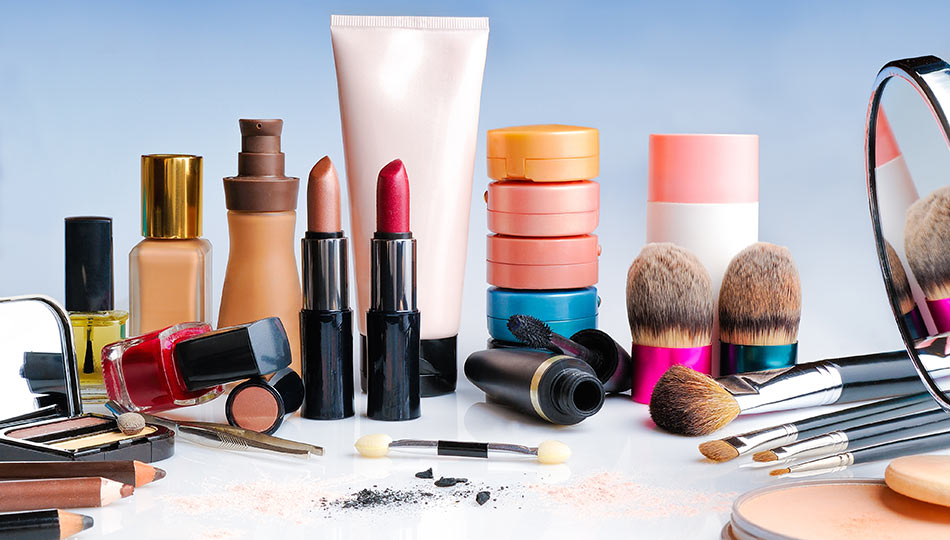How Are Chemicals Used In Different Types Of Makeup Products
Chemicals in cosmetics
In Europe, we apply at least seven unlike cosmetic products per day on average. They range from hygiene products like lather, shampoo, deodorant and toothpaste to beauty products like perfumes and make-up. Cosmetics contain many chemicals – take a await at the ingredients labels.

Europe has the most comprehensive laws on cosmetics in the world. The regulation on cosmetics contains a list that specifies the substances that are allowed to be used, those that take specific restrictions and those that are banned.
Some chemicals in cosmetics may cause allergic reactions. These ingredients are oftentimes man-made but may also be of natural origin. 'Natural' therefore does non necessarily hateful increased condom.
The substances that may cause allergies tend to exist preservatives and perfumes. Preservatives are there to prolong the shelf-life of a product and to kill leaner that would otherwise abound on it.
Who is responsible for the prophylactic of cosmetics?
Before selling a corrective production, a manufacturer must make sure that their product goes through a scientific cess of its prophylactic. They need to submit the assessment information to European authorities through a cosmetic products notification portal, showing that the substance used in the product does not pose a health risk.
The authorities in each Eu country do market surveillance and acquit out tests on products. They may withdraw products that comprise forbidden chemicals. These are reported to the European Committee, which shares the data among all the European union countries.
You can subscribe to a weekly summary of products that take been withdrawn in whatsoever of the EU countries considering they have been found to be unsafe.
Nanomaterials
In corrective products, a nanomaterial is an insoluble or biopersistent and intentionally manufactured textile. In the European union, companies are required to specify if their cosmetic production contains nanomaterials.
Nanomaterials used equally colourants, preservatives and UV filters must be authorised past the European Commission before they tin can be used in cosmetic products.
Nanomaterials must be labelled in the list of ingredients with the word "nano" in brackets following the proper name of the substance.
No animal testing
Testing cosmetics on animals has not been allowed in Europe since 2004. Information technology is also forbidden in Europe to market place whatever cosmetic production that contains ingredients tested on animals.
Nonetheless, many ingredients that go into cosmetics are too used in other products, such as in pharmaceuticals, detergents and nutrient. Some of these substances may therefore still be subject to animal testing requirements under these laws. There are still some tests that cannot yet be replaced with reliable not-beast methods, simply the EU and the international community are working on developing more.
Source: https://chemicalsinourlife.echa.europa.eu/chemicals-in-cosmetics
Posted by: chavarriapoodut84.blogspot.com

0 Response to "How Are Chemicals Used In Different Types Of Makeup Products"
Post a Comment